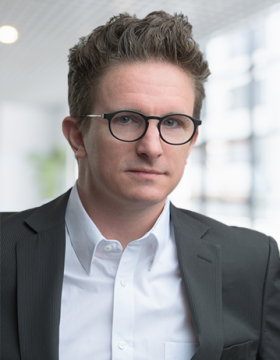By Gary S. Jackson, Director Consulting Expert, Data Science, CGI
“A lie gets halfway around the world before the truth has a chance to get its pants on.”
Winston Churchill
Can you trust blockchain?
Blockchain is perhaps best known for its association cryptocurrency, but it is so much more. Cryptocurrencies are simply digital money, using blockchain to verify transactions and maintain records, a decentralized system using cryptography rather than a centralized authority.
Think of it as a hundred people balancing a checkbook against the same account, each of them validating that transactions are authentic, accurate and tracked.
Who would you trust more? One person or a hundred?
Can you trust data?
When I was in kindergarten, we used to play a game called “telephone.” You sit in a circle and whisper a word or phrase into the ear of the kid sitting next to you; they, in turn, whispered the same word or phrase to the next person and on around the circle. By the time it gets back to you, it has morphed into something very different.
Later, when I graduated college in the late 1990s, statistics was the queen of everything. It had ruled supreme; statistics is the mother to data science as we know it. When someone used statistics on a slide, we accepted it.
Then slowly stats began to lose its power.
Why? Slowly we began to realize it was like that game of telephone. The volume of data was rapidly swelling, while various sources manipulated data to reveal desired outcomes. It became harder and harder to know what was true.
Then companies such as Google and Facebook began using this data to manipulate not just statistics, but people. They learned how to keep you engaged, browsing, swiping, liking and buying. By the time COVID-19 struck, no one believed anything anymore — not social media, the news, politicians or even their neighbors.
Blockchain to save the day.
“Truth” can be determined by users if they trust the source.
Remember, blockchain is a decentralized, distributed and public digital ledger that records transactions across thousands of computers or nodes; no one can alter the record retroactively.
So translated into simple terms…
Just like in “telephone,” if your word or phrase is different when it has traversed the circle, you know you can’t trust it. That gives you two choices:
- Throw out the word or phrase completely.
- Or you ask all the kids to say the word or phrase out loud at the same time. If one word or phrase is echoed the most, that one word or phrase has consensus over all others.
The goal is to get back to a trusted baseline of “truth.”
Blockchain allows us to verify digital content and identify the sender and author of data, content, or any type of source — something we could not do before. This means any piece of content has a chain of custody from its creation to its state of last use.
Everything that is saved into a blockchain has been checked over and over and over again – to make sure everything matches or is true to the source that originated it.
True + True = True
After this verification of what is true to the source, you could take a word or phrase said and agreed upon by one circle of kids and combine it with a word or phrase agreed upon by another circle of kids as true – and combine them to make a sentence. Add more phrases or words from other circles to tell a complete true story.
Imagine the power of this concept and taking digital assets such as datasets, algorithms, training datasets, visualizations, and machine learning models that have been deemed true to be combined to create new assets Then being able to transparently link all types of digital assets back to who created them and how they have been used prior.
In other words, take a dataset that is agreed upon as truth in one circle and combine with code or an algorithm from another circle that has also agreed it is the truth to create some new asset.
The goal is take digital assets and combine them together to create even more powerful assets.
What if you could share a global weather dataset of all the storms and weather patterns across the Earth that has been deemed true by the Weather Channel or a group of trusted climate scientists? You could then combine this dataset with weather prediction algorithms by other countries, each deemed true by their trusted meteorologists. Suddenly, this one digital asset – a global weather dataset – has spawned hundreds of new true datasets by hundreds of new algorithms that focus on each country’s 15-day forecast.
Can you trust blockchain?
Can you trust what you share with others?
I take a deeper dive on these questions in my next article “Blockchain To Save The Day – Part 2: How To Share Data Again.”
“If you always do what you always did, you will always get what you always got.”
– Albert Einstein
Register to attend Blockchain To Save the Day on September 21 from 1:30-3:00 p.m. during Innov865 Week!

